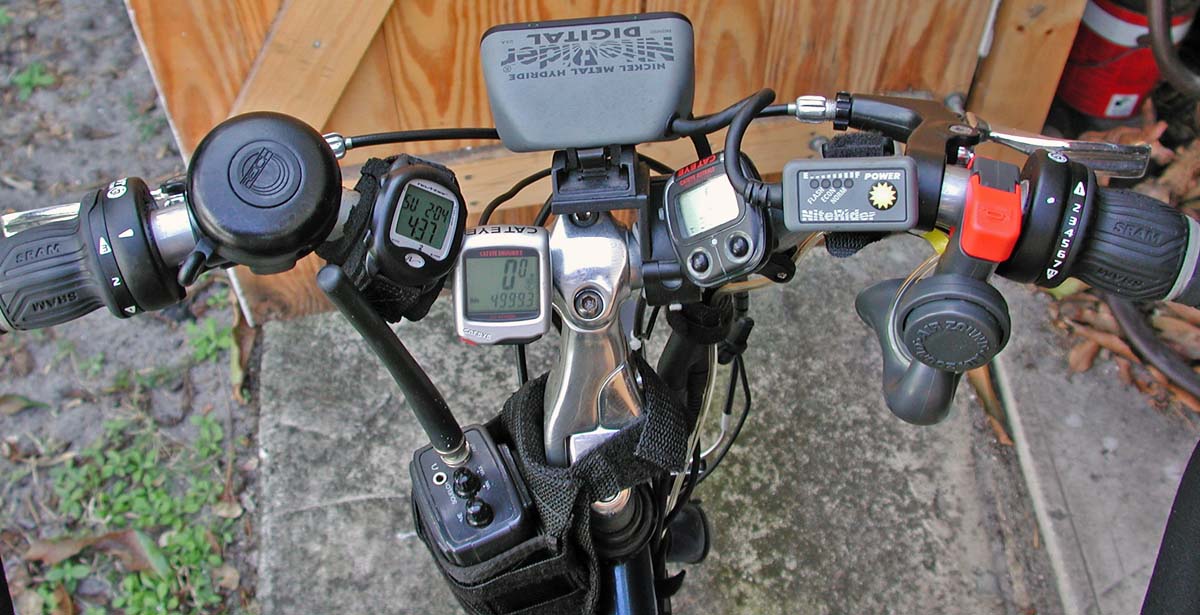I bought a Nashbar heart rate monitor (HRM) last year about this time, mostly because I’m a gadget freak and partially because the warranty runs out pretty early on Steinhoff males and I wanted to see how close to becoming a red-colored fountain I was.
I’ll be 54 this month. I’m 5’10 and weight about 190-195. I started riding about two years ago after 25 years of little exercise and have wracked up about 5,200 miles.
The highest rate I’ve hit was 194 BPM climbing a fairly steep hill on a hot day. I can ride all day in the 160-165 BPM range with a cadence in the 85-95 range. I can feel it when I hit the 180s for any length of time.
When I stop, I usually use 130 BPM as my refreshed starting point, and I usually reach it within about two or three minutes.
I don’t know what my morning resting rate is, but one of those automatic blood pressure checkers at the drug store the other day calculated my HR at 58 BPM.
Heat and humidity will elevate the rate by about 10 BPM. When the temps and humidity hit the mid-80s, my recovery HR may not dip below the 150s until and unless I get into the shade with a wind blowing. It must take a lot of pumping to cool off the engine.
One observation that I can’t explain is that my rate seems to drop the longer I ride. If I start out at 175, within 10 miles I may be in my “normal” range of the mid-160s and at 50 miles I may be in the low 150s. I would have thought the other would have happened.
Riding in heavy traffic will also cause my rate to go up as much as 3 to 5 BPM. (That doesn’t count what happens when biker road rage kicks in.)
What does it all mean? Heck if I know. It’s just another thing to look at to keep from being bored.

